| RAF - Flying Helmets |
| Item view |
Item name / description |
AM Ref. |
Size |
Manufacturer |
Date |
|---|
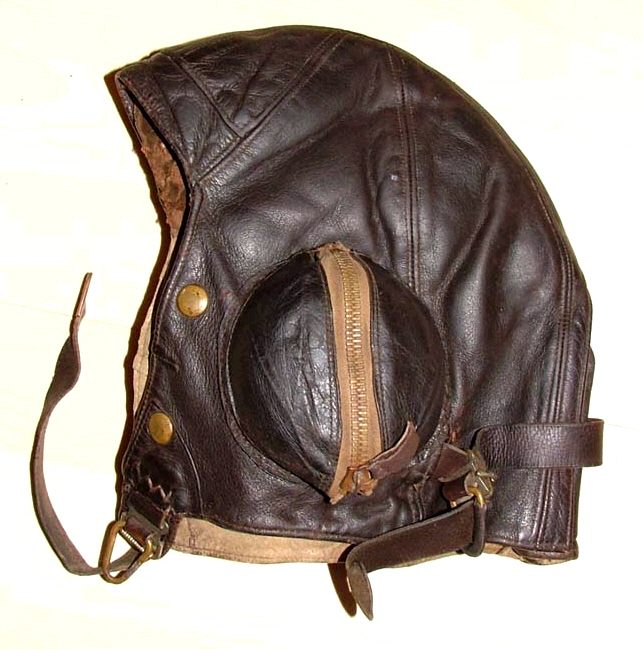
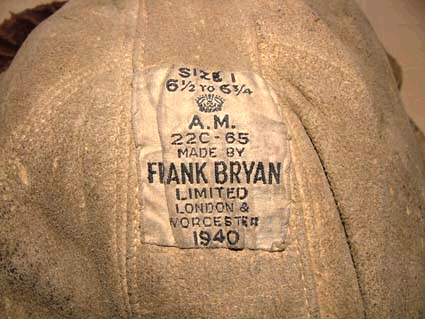 |
Helmet, Flying, Type B
The Type B Flying Helmet was introduced in
1935.
|
22C/65 |
1
2
3
4 |
- F. BRYAN Ltd.
- G. WADDINGTON & SONS Ltd.
- B. STERLING & Co. Ltd.
- J. COMPTON & SONS WEBB Ltd.
- BEDNALLS |
1939,1940
1941
1939
1940
|
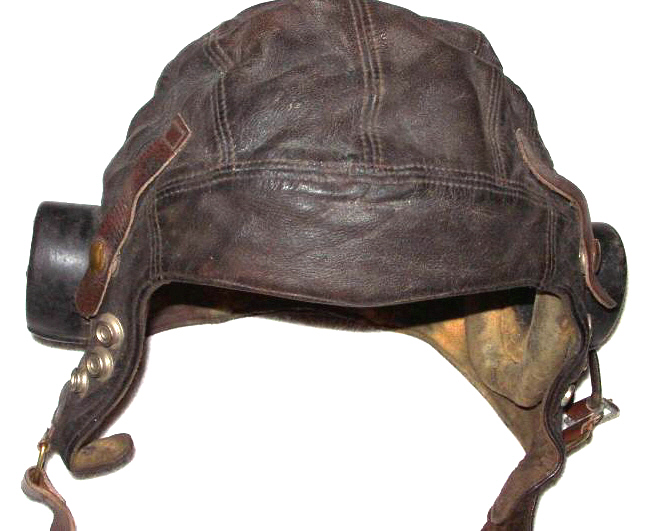
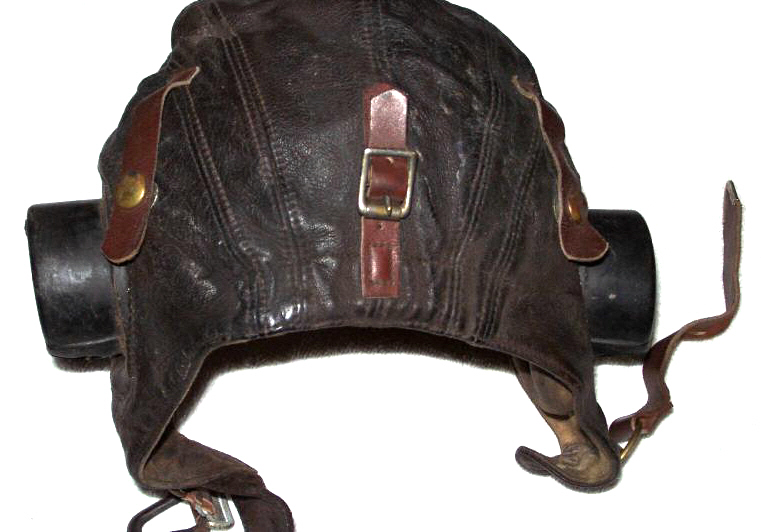 |
Helmet, Flying, Type C, 1942 Pattern
First issue Type C Flying Helmet. This helmet had a leather chinstrap and external wiring loom and microphone jack.
Le premier modèle du serre-tête Type-C a été introduit en 1942. Il est équipé d'un câblage radio externe et
d'une mentonnière en cuir. |
22C/449
22C/450
22C/451
22C/452 |
1
2
3
4 |
|
|
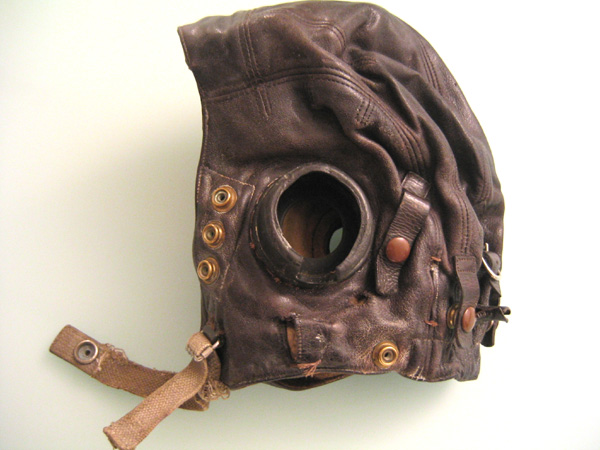
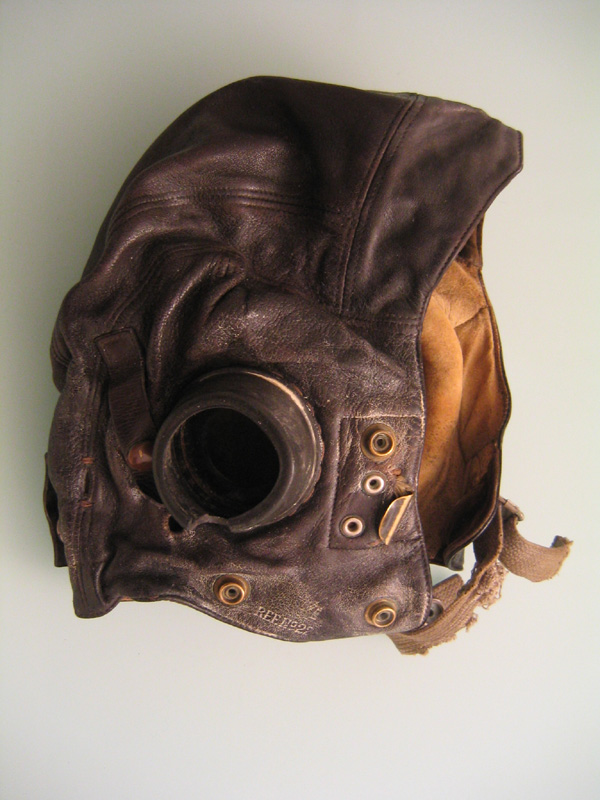
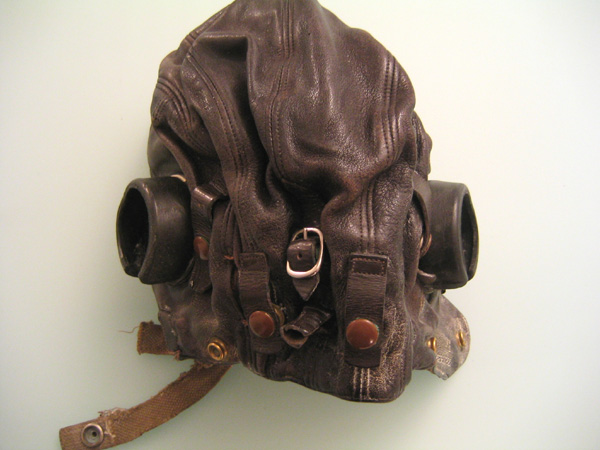
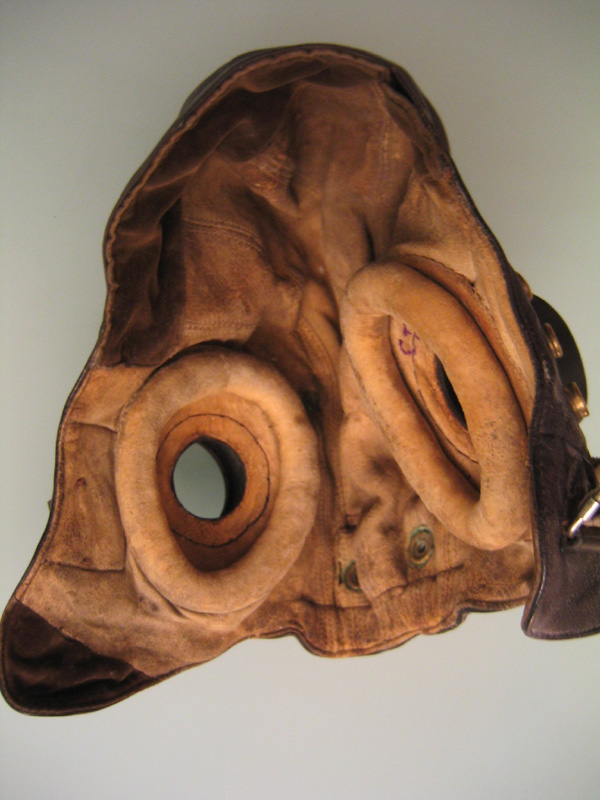
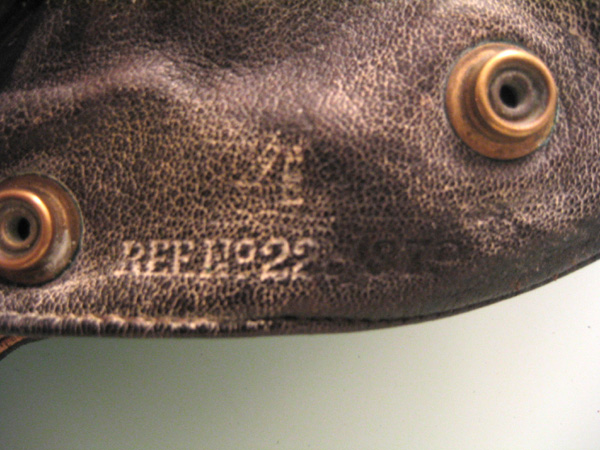 |
Helmet, Flying, Type C, 1943 Pattern
The Type C Flying Helmet, Second Pattern, was introduced in 1944. This helmet differs from the early version in that it had a gray elastic chinstrap and internal wiring loom and microphone jack.
Often worn by USAAF pilots, it was equipped with US wiring loom, plug and RAF or US receivers.
C-Type helmets remained in RAF service until the
early 1960s.
Le second modèle du serre-tête Type-C a été introduit en 1944. Il diffère du modèle précédent par l'intégration des câbles radio et de la prise micro dans la doublure et par la présence d'une
mentonnière en élastique bleu gris.
Le serre-tête Type-C était aussi porté par les pilotes de l'USAAF. Il était équipé alors de câbles radio avec des prises américains et des d'écouteurs anglais
(AM 10A/7063, 10A/12443 ou 10A/13466) ou américains (R-14 ou ANB-H-1).
Le Type C resta
en service dans la RAF jusqu'au début des années 60. |
22C/877
22C/878
22C/879
22C/880 |
1
2
3
4 |
|
|
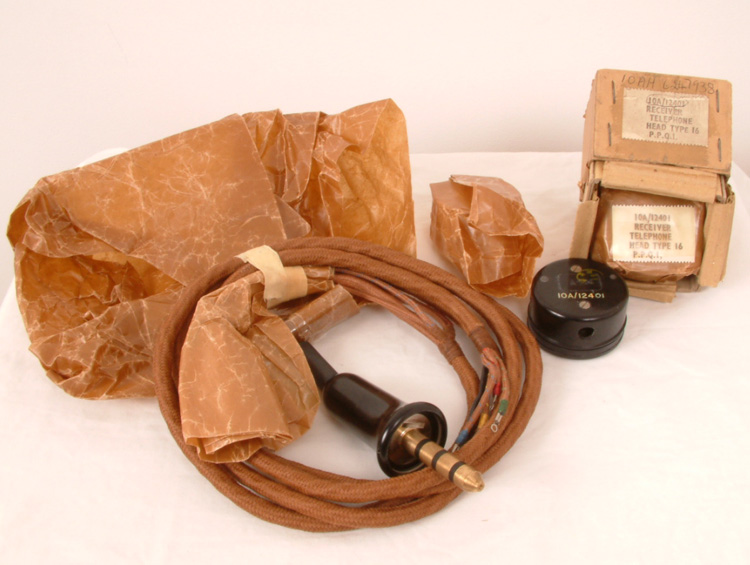
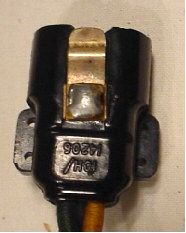
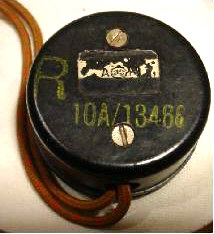
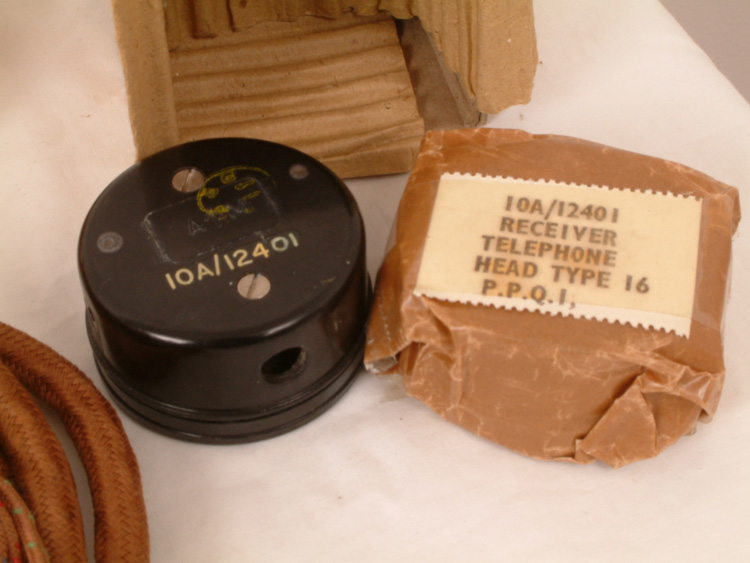 |
Wiring Loom
Plug, Microphone
Jackplug
Earphones
Wiring loom and plugs for the internally
wired RAF C-Type and Royal Navy C-Type leather flying helmets.
Câblage radio du
serre-tête Type C de la RAF ou de la Royal Navy. |
10H/4887
10H/14206
10H/1099110A/7063
10A/12401
10A/12443
10A/13466 |
|
|
|
| RAF - Caps |
| Item view |
Item name / description |
AM Ref. |
Size |
Manufacturer |
Date |
|---|
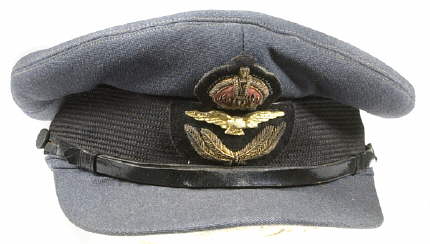
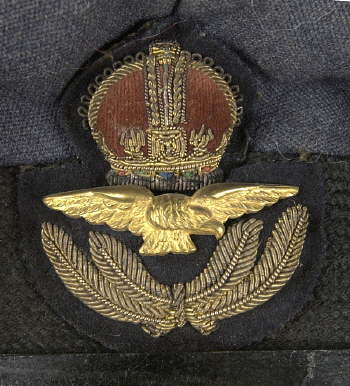 |
RAF, Cap, Officer |
|
6-1/2
6-5/8
6-3/8
7-1/8
7-1/4
7-3/8
7-1/2 |
|
|
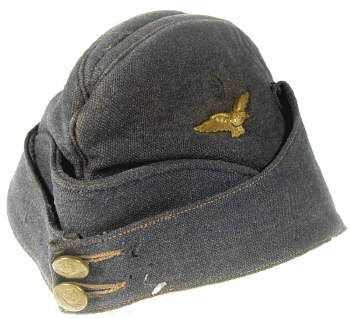 |
RAF, Side Cap, Officer |
|
6-1/2
6-5/8
6-3/8
7-1/8
7-1/4
7-3/8
7-1/2 |
- SILBERTON & SONS Ltd
- J. COLLETT Ltd (London) |
1945
1942,1945 |
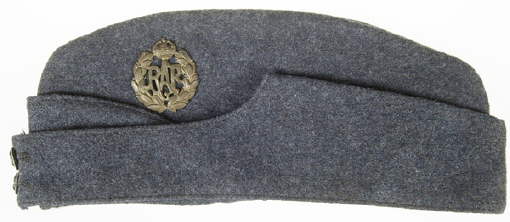
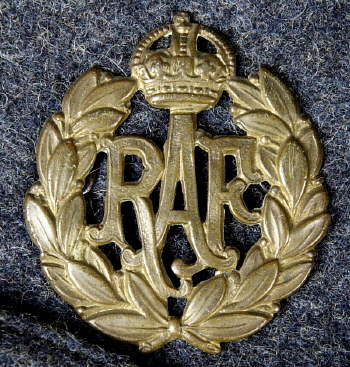
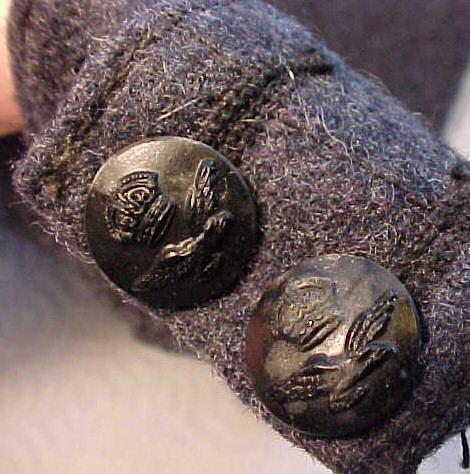
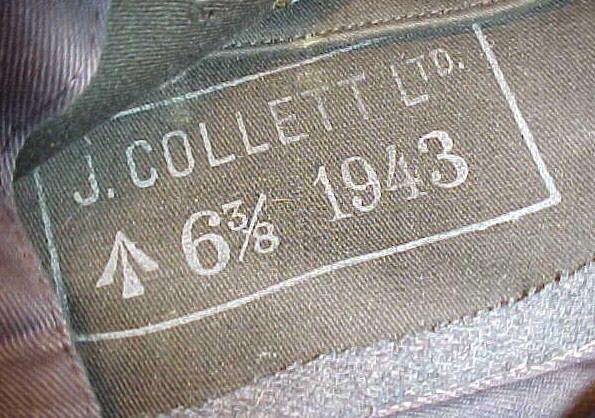
|
RAF, Side Cap, Enlisted Men |
|
6-1/2
6-5/8
6-3/8
7-1/8
7-1/4
7-3/8
7-1/2 |
- SILBERTON & SONS Ltd
- S. & P. HARRIS Ltd (Glasgow)
- J. COLLETT Ltd. (London) |
1943
1945
1943 |
| RAF - Oxygen Masks |
| Item view |
Item name / description |
AM Ref. |
Size |
Manufacturer |
Date |
|---|
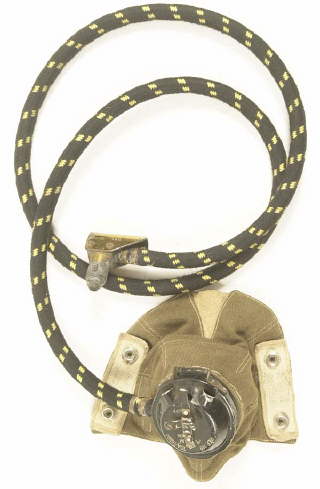
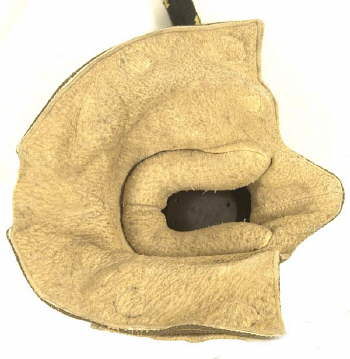
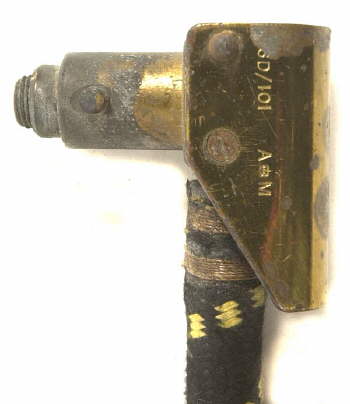 |
Oxygen Mask, Type D
Connector, hose, Pattern 1941
The Type D oxygen mask was made from cloth. It is equiped with
a cotton covered rubber cable and a hose connector.
Le masque à oxygène Type D est tout en tissu et équipé d'un tuyau de caoutchouc gainé de tissu terminé par une prise spécifique. |
6D/117
6D/101
|
|
|
1935
19421941 |
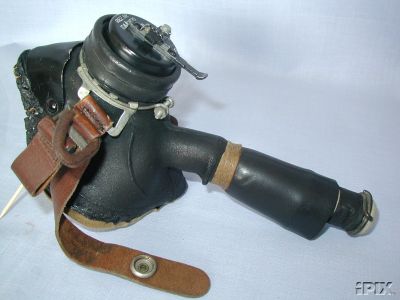
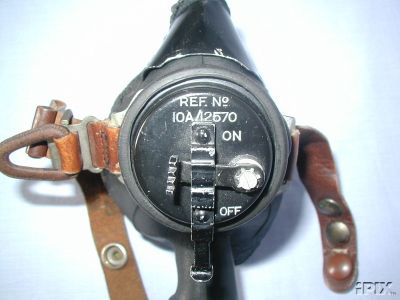
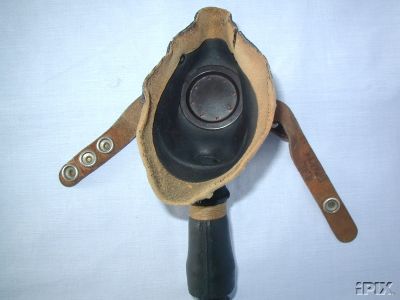 |
Oxygen Mask, Type E
The Type E oxygen mask was worn by the RAF in the mid-war period before the
introduction of the E* & G masks. This is the pattern without the
expiratory valve and is fitted to the helmet by a leather strap type harness
and Bennett buckle adjuster and not the webbing harness like the E* mask.
Fitted here with a Type 26 microphone, unwired.
Le masque à oxygène Type E équipait
les pilotes de la RAF en 1941 et 1942 avant l'introduction du Type E* et G. Il
ne possède pas de valve d'expiration et se fixe sur le serre-tête à l'aide
d'une sangle en cuir réglable contrairement aux modèles suivants qui seront
équipés de sangles en coton.
|
|
|
|
1941 |
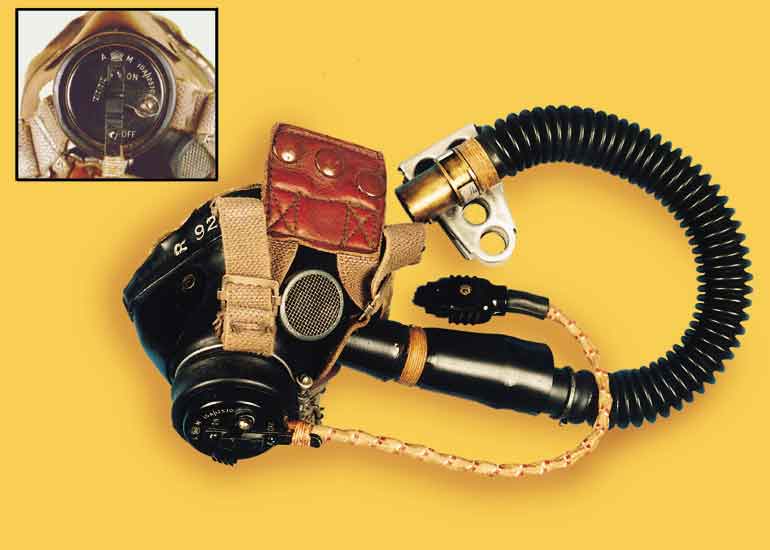 |
Oxygen Mask, Type E*
The Type E* oxygen mask (sometimes referred to as the
Type F) was an upgraded version of the Type E. The Type E was the first rubber oxygen mask to be supplied by the British Air Ministry, in 1941, (its predecessor, Type
D, was made from cloth). It suffered from a number of design faults and was soon superseded by the E* which had an improved breathing system and harness arrangement. It was found to be a vast improvement over the cloth masks (which couldn't seal around the face), and laid the path to all future aviation respiratory equipment technology.
Interestingly, both the MkVII goggles and the E* oxygen mask, were used as much by the U.S. Army Air Force as they were by the RAF. When the first contingents of USAAF personnel arrived in Britain, they shared many of the bases with the RAF.
Subsequently, they were often issued with Air Ministry equipment, particularly when their own supplies did not suffice. Even when supplies of their own equipment were available, many of the Americans chose to carry on using their Air Ministry gear. This was particularly so of the 56th Fighter Group.
Le masque à oxygène Type-E* (parfois
appelé Type-F) est une version améliorée du
Type E. Le Type E était le premier masque à oxygène en
caoutchouc fabriqué pour le ministère de l'air en 1941 (son prédécesseur, le
Type D étant fait de tissu). Il souffrait d'un très grand nombre de défauts et fut remplacé par le
Type E* lequel avait un meilleur système de respiration et de fixation. |
|
|
|
|
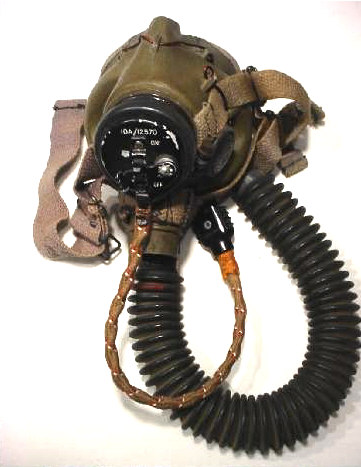
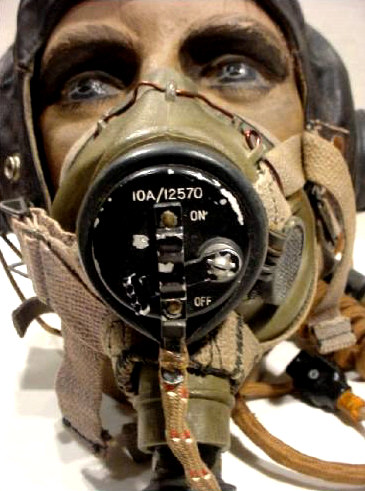
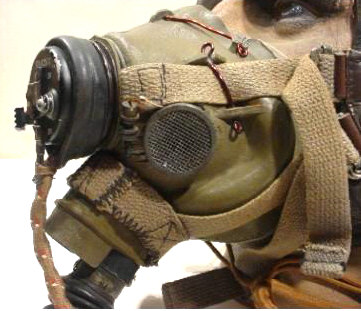
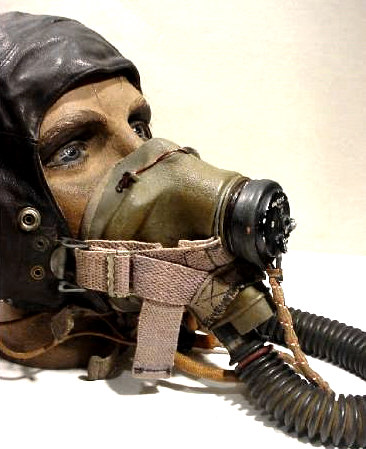
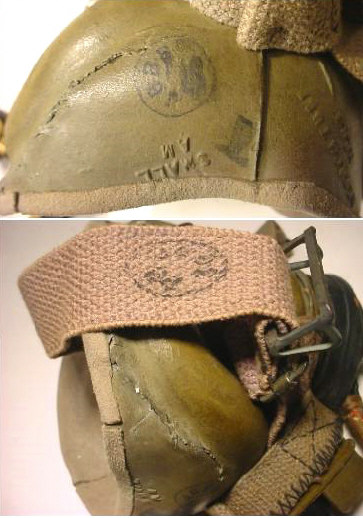
|
Oxygen Mask, Type G
The Type G was a rubber oxygen mask. It was
introduced into R.A.F. service in about 1942 and became the standard issue for
Fighter and Bomber crews.
Le masque à oxygène Type-G, tout en
caoutchouc, fut introduit en 1942 et devint le masque à oxygène standard des
pilotes de chasse et des équipages de bombardiers jusqu'à la fin de la
guerre. |
6D/643
6D/644
6D/645 |
Large
Medium
Small
|
|
1942
1945
|
| |
Clip, Oxygen Hose, Type MkIV |
6D/526 |
|
|
|
| RAF - Microphones |
| Item view |
Item name / description |
AM Ref. |
Size |
Manufacturer |
Date |
|---|
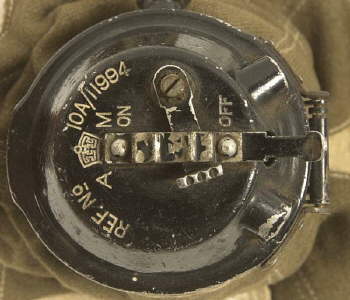 |
Microphone, Oxygen Mask, 1941 Pattern
Black painted alloy microphone for used
in D-type mask and introduced in October 1940.
Micro se fixant sur le masque à
oxygène Type D.
|
10A/11994 |
|
|
1940 |
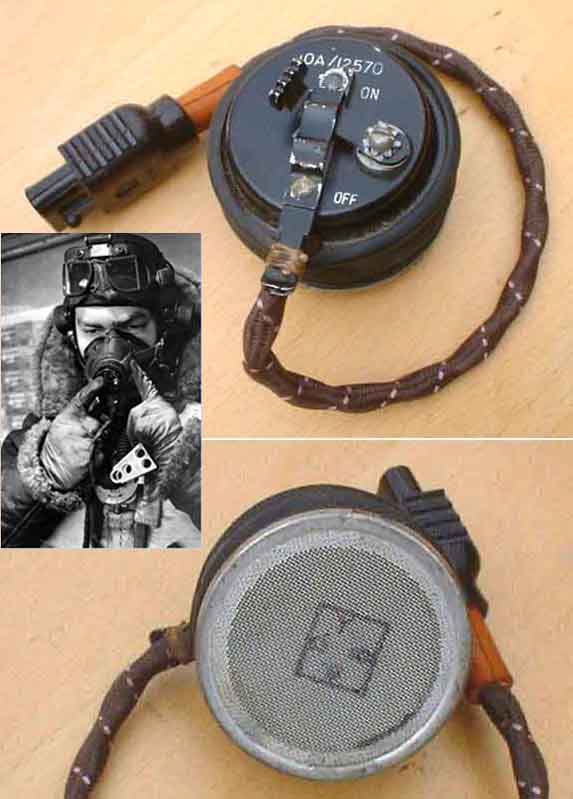 |
Microphone, Oxygen Mask, 1943 Pattern
Microphone used for type E, F and G. It is equiped with a brown cotton covered cable and a
bakelite two pin plug to connect to the Flying Helmet wiring harness.
Micro se fixant sur les masques à
oxygène du Type E, F et G. Il est équipé d'un câble gainé de tissu marron et
terminé par une prise mâle qui se connecte sur la prise logée dans le
serre-tête. |
10A/12570 |
|
|
1943 |
| RAF - Flying
Goggles |
| Item view |
Item name / description |
AM Ref. |
Size |
Manufacturer |
Date |
|---|
| |
Goggles, Flying, Type MkII
The MkII goggles have a aluminium frame
with fur face mask and glass lenses. Introduced in 1928, this pattern was obsolete long before WW2 began, but
they were used by some pilots during the Battle of Britain. Les
lunettes MkII possèdent une monture en aluminium. Introduites en 1928 et
obsolètes avant le début de la seconde Guerre Mondiale elles sont tout de
même utilisées par quelques pilotes durant la Bataille
d'Angleterre. |
|
|
|
1928 |
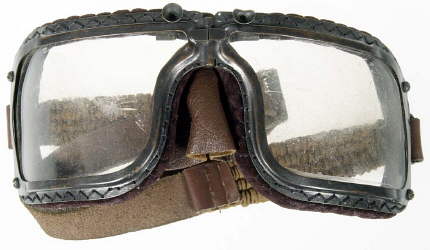 |
Goggles, Flying, Type MkIII A
These are metal frames with two piece clear curve
plastic lenses, brown leather & brown velveteye padding & brown leather nose bridge. The elastic web head strap is in brown cotton. |
22C/62 |
|
|
|
| |
Goggles, Flying, Type MkIV A
The MkIV A goggles have a metal frame with
glass lenses and flip sun shield. Cord side straps were connected in rear to an
ajustable elastic strap. They were made
of Bakelite in an effort to save weight but were too fragile and short-lived. |
22C/111 |
|
|
1940
1941 |
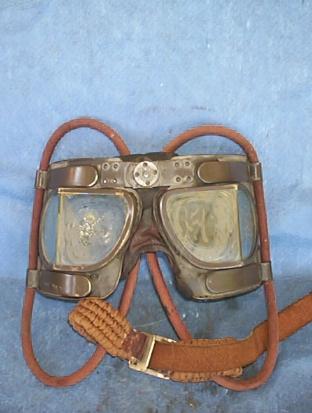 |
Goggles, Flying, Type MkIV B
The MkIV B goggles have a metal frame with
glass lenses without flip sun shield. |
22C/167 |
|
|
|
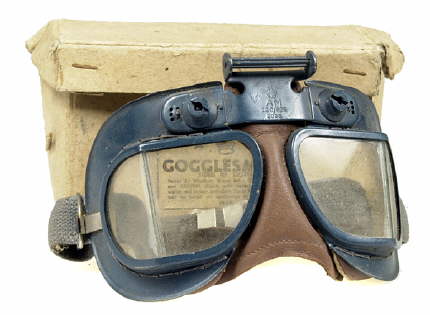
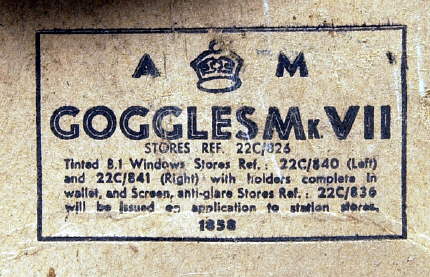 |
Goggles, Flying, Type MkVII
The MkVII goggle was made for the British Air Ministry as an RAF issue item. It came into service around the beginning of 1941, superseding all other marques that went before. It was immediately popular, as it allowed better vision and was much more comfortable than any of its predecessors.
It utilises the 2-piece split lens principle, with strong metal frames and leather/chamois face cushions. A substantial elastic strap, with adjuster, is used to secure it to the head. The nose bridge section is stamped with the Air Ministry A.M. mark.
Les lunettes MkVII ont été fabriquées pour le ministère de l'air pour les pilotes et les équipages de la RAF. Elles entrèrent en service au début de 1941 et supplantèrent toutes les autres lunettes de vol car elles offraient une plus grande vision et étaient plus
confortables que ces prédécesseurs.
Elles sont constituées de deux verres entourés d'une armature métallique bordée elle-même de cuir et de chamois. Un élastique réglable permet de les maintenir sur la tête. Le marquage du ministère de l'air A.M. se trouve entre les deux verres. |
22C/826 |
|
|
1942
1943
|
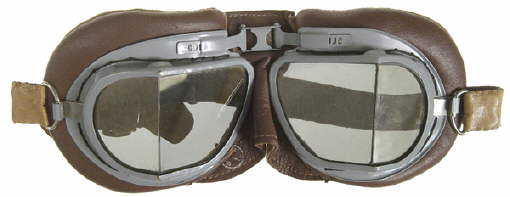
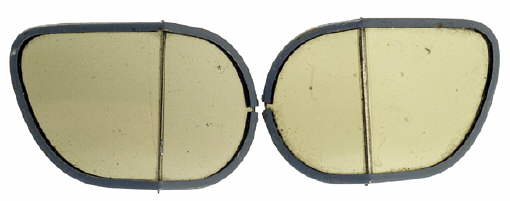
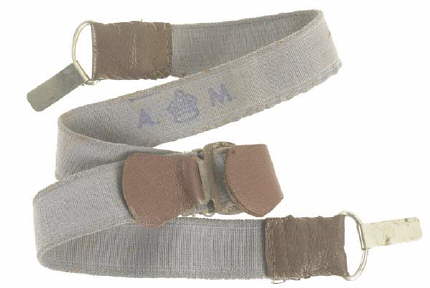 |
Goggles, Flying, Type MkVIII
These are metal frames with leather face cushions and glass lenses. The back of the cushions are chamois lined. The lens are made up of two pieces of glass in blue-gray metal frames for each
side. The MKVIII goggles were issued from 1944 to 1970. |
22C/930 |
|
|
1944 |
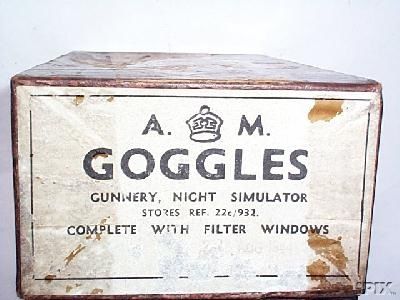
|
Goggles, Gunnery, Night Simulator
Black rubber frame with density lenses.
These were used by pilots during daytime to simulate flying during the night. |
22C/932 |
|
|
1942
1945 |